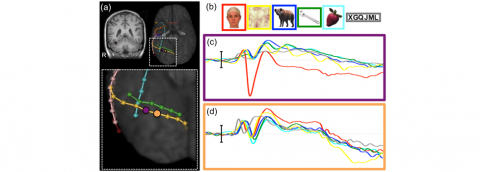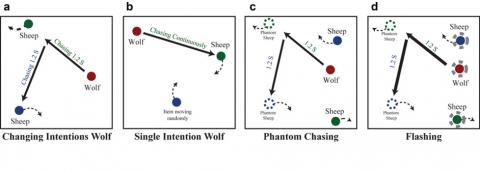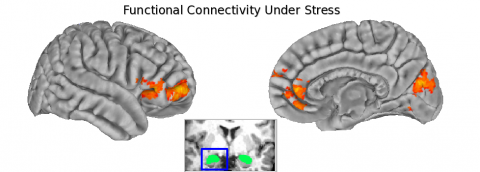Scientific Approach
Our research program is concerned with the functional organization of the human brain. In the broadest sense, our interest is to identify and characterize functional brain processes, and to determine how these processes combine to produce psychological phenomena. We are also interested in how these functional brain processes and their anatomical substrates are altered in pathological states. This overarching approach is reflected in the research themes that embody our current program of research, which are described in detail below. To accomplish our scientific goals within each of these themes, we use a range of techniques including neuroimaging, scalp-recorded EEG from healthy volunteers, intracranial EEG from subdural electrodes in patients, psychophysiology, eye-tracking, and behavior.
Research themes:
- See more at: http://mccarthylab.yale.edu/research/research-gallery#overlay-context=re...
Scientific Approach
Our research program is concerned with the functional organization of the human brain. In the broadest sense, our interest is to identify and characterize functional brain processes, and to determine how these processes combine to produce psychological phenomena. We are also interested in how these functional brain processes and their anatomical substrates are altered in pathological states. This overarching approach is reflected in the research themes that embody our current program of research, which are described in detail below. To accomplish our scientific goals within each of these themes, we use a range of techniques including neuroimaging, scalp-recorded EEG from healthy volunteers, intracranial EEG from subdural electrodes in patients, psychophysiology, eye-tracking, and behavior.
Research themes:
- See more at: http://mccarthylab.yale.edu/research/research-gallery#overlay-context=re...
Scientific Approach
Our research program is concerned with the functional organization of the human brain. In the broadest sense, our interest is to identify and characterize functional brain processes, and to determine how these processes combine to produce psychological phenomena. We are also interested in how these functional brain processes and their anatomical substrates are altered in pathological states. This overarching approach is reflected in the research themes that embody our current program of research, which are described in detail below. To accomplish our scientific goals within each of these themes, we use a range of techniques including neuroimaging, scalp-recorded EEG from healthy volunteers, intracranial EEG from subdural electrodes in patients, psychophysiology, eye-tracking, and behavior.
Research themes:
- See more at: http://mccarthylab.yale.edu/research/research-gallery#overlay-context=re...
Scientific Approach
Our research program is concerned with the functional organization of the human brain. In the broadest sense, our interest is to identify and characterize functional brain processes, and to determine how these processes combine to produce psychological phenomena. We are also interested in how these functional brain processes and their anatomical substrates are altered in pathological states. This overarching approach is reflected in the research themes that embody our current program of research, which are described in detail below. To accomplish our scientific goals within each of these themes, we use a range of techniques including neuroimaging, scalp-recorded EEG from healthy volunteers, intracranial EEG from subdural electrodes in patients, psychophysiology, eye-tracking, and behavior.
Research themes:



